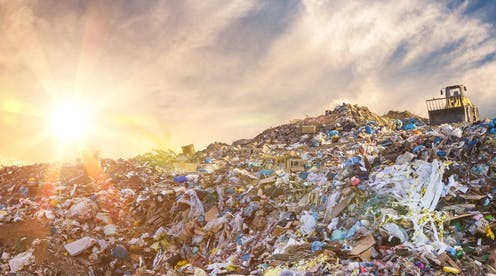UPS has set a goal to reduce greenhouse gas emissions 12% by the year 2025. The company is focusing on using biomethane, or renewable natural gas (RNG) as their fuel source. “By switching to renewable natural gas, UPS estimates its vehicles will reduce as much as 1.2 million metric tons of greenhouse gas emissions through 2026. That’s the equivalent of removing more than a quarter million vehicles from the road.”[1] UPS operates a fleet of over 123,000 vehicles with more than 10,000 of those running off of alternative fuel or other technologies.
The biggest barrier to using RNG is that it is expensive to produce in comparison to the natural gas that is being produced in both the Permian and Appalachian Basins. “Here’s how it works: Before it can get released into the atmosphere, methane gas is removed from buried waste at landfills, dairy farms and wastewater treatment plants. That methane gas is then turned into renewable natural gas in a purification process that removes water and carbon dioxide.”[2] Natural gas in the Permian has been given away for free and Appalachian Basin continues to produce at record levels. The supply abundance of natural gas helps to provide attractive prices to others in markets looking to use it.
While RNG is not widely available in the market, the government is assisting in subsidizing it. “Without such incentives, historically, it’s been pretty expensive to collect biogas at smaller distributed waste projects. The renewable fuels standard program reimburses the biogas provider, while the customer (UPS) pays the same price as it would for natural gas.”[3] UPS plans to buy up to 25 million gallons of biomethane from a company in Newport Beach, California called Clean Energy Fuels.
“UPS is using natural gas- and RNG-powered trucks to run longer over-the-road shipping routes. Its efforts around electrification, in comparison, largely have been around using electric delivery trucks in urban areas for shorter, stop-and-start runs.”[4] UPS plans to increase their fleet of electric vehicles. In the U.S., they operate around 1000 electric or hybrid vehicles. UPS is actively working with Tesla to source electric semi-trucks and also in conversations with Workhorse Group for delivery trucks.
[1] https://www.cnn.com/2019/05/22/business/ups-renewable-natural-gas/index.html
[2] https://www.cnn.com/2019/05/22/business/ups-renewable-natural-gas/index.html
[3] https://www.greenbiz.com/article/ups-buy-huge-amount-renewable-natural-gas-power-its-truck-fleet
[4] https://www.greenbiz.com/article/ups-buy-huge-amount-renewable-natural-gas-power-its-truck-fleet




